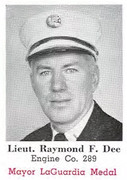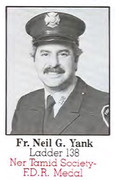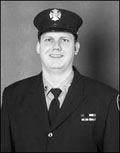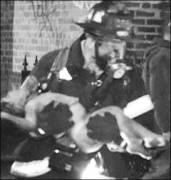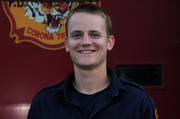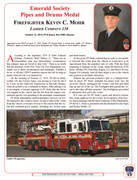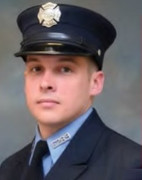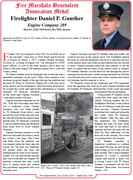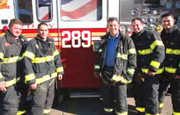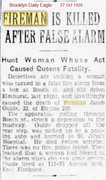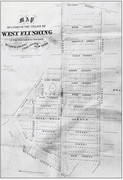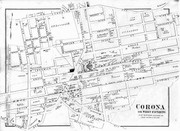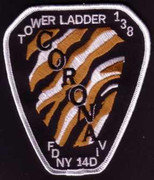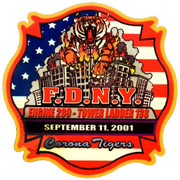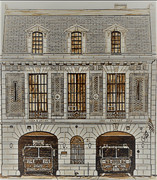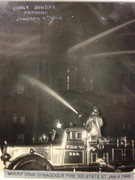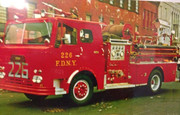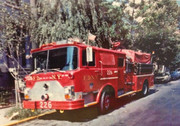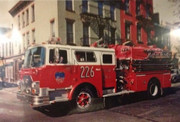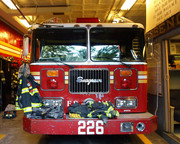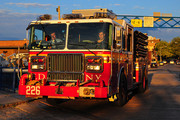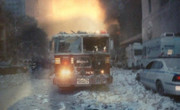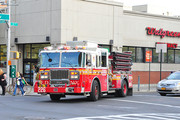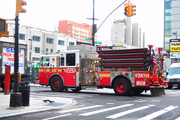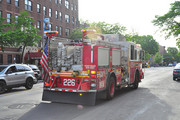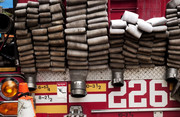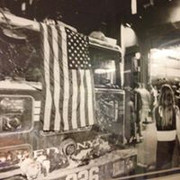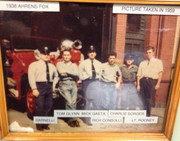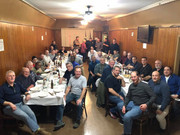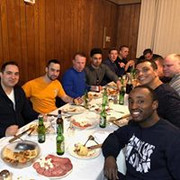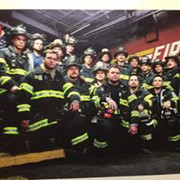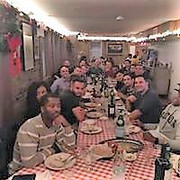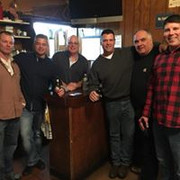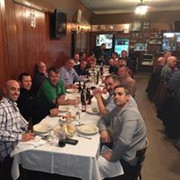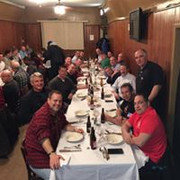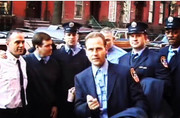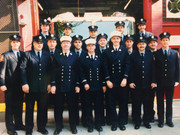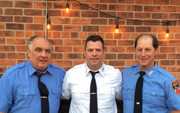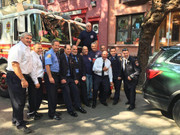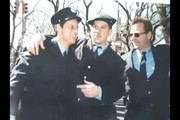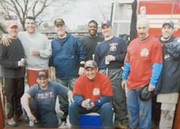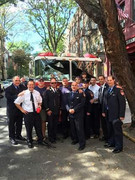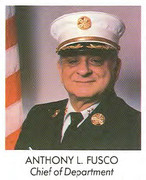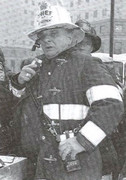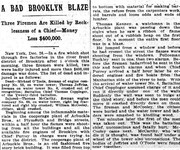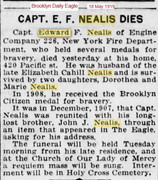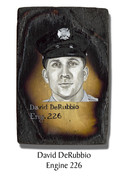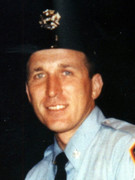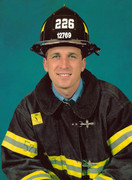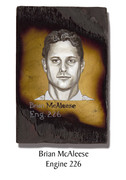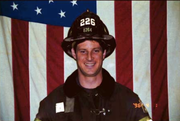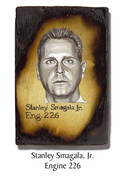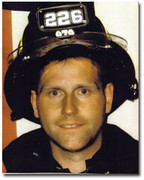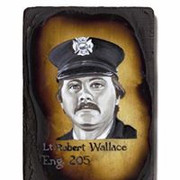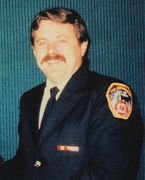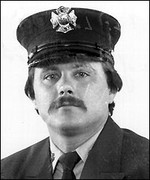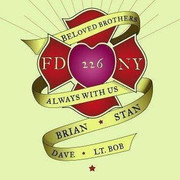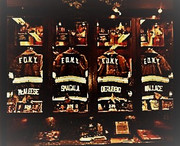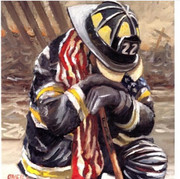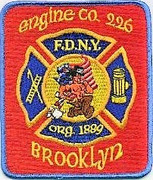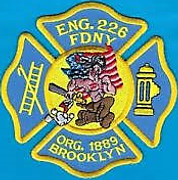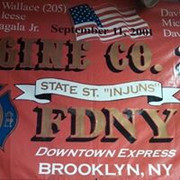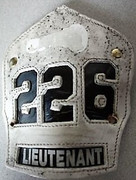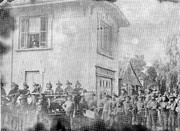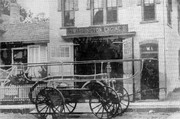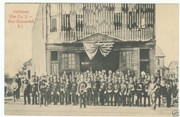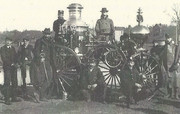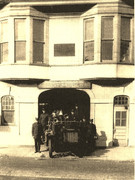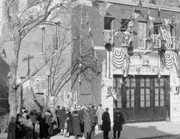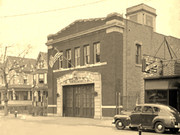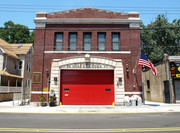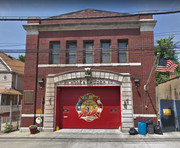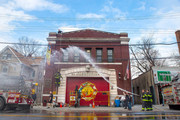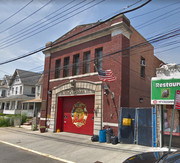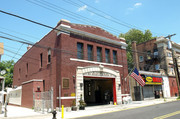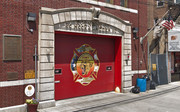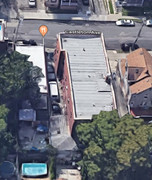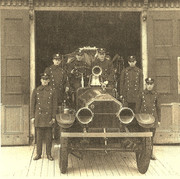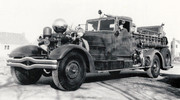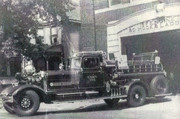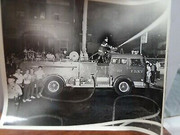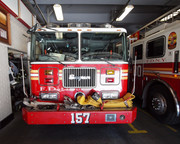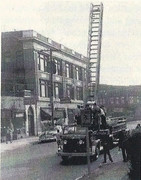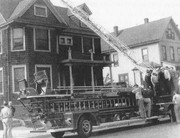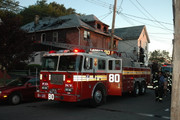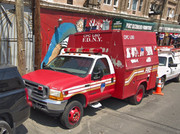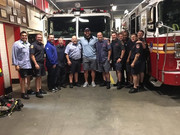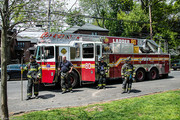Engine 226 firehouse 409 State Street Boerum Hill, Brooklyn Division 11, Battalion 31
Engine 26 BFD organized 409 State Street 1889
Engine 26 BFD became Engine 26 FDNY 1898
Engine 26 became Engine 126 1899
Engine 126 became Engine 226 1913
Battalion 33 located at 409 State Street at Engine 226 1906-1922
Pre-Brooklyn Fire Department (BFD):
Volunteer Engine 16 ?Mt. Prospect? was located at State Street and Nevins Street. They reorganized as Engine 16 ?Hibernia? in 1867 at 16 Cole Street. Engine 16 was disbanded in 1869.
Engine 26 BFD ?
Engine Company No. 26
Engine Company No. 26 has just entered upon its fourth year of service in the Department, having been organized by Commissioner John ENNIS, Jan. 9, 1889. The quarters of the company are in State Street, near Nevins and are the finest in the city. The district covered by the company on a first-alarm is a very important one as within its boundaries are located all the Municipal Buildings, the great grain elevators and store houses along the East River front, the fashionable clubs, several large office building
and hotels, all the theatres in the vicinity of the City Hall, seven or eight public schools all the large retail dry goods stores and business places, several large churches and a number of flat-houses and factories. Included also in this territory are St Peter's Hospital, the Long Island College Hospital, St. Paul's Orphan Asylum, the Sheltering Arms Polytechnic Institute, Packer Institute, Boy's High School, and St. Francis Academy.
The company is provided with the regulation second-class Amoskeag engine a four wheel hose-cart, and four powerful gray horses whose average time in getting the apparatus out of the house is ten seconds. During its first year of service, the company had some large fires, among them being those at the Brooklyn Tabernacle. Brasher' s oil cloth works and the Adelphi Academy. The men took a very active part in extinguishing the fires at Hyde & Behman's Theatre, the Penitentiary, Palmer's cooperage
Richardson's car stables. Pinto's grain elevator, the Brooklyn Sash and Blind Company's factory, and Smith, Gray & Company's building.
The men who compose this company do not know the meaning of the word "fear." There are those among them who have not faltered for a moment when human life was in peril, and others still who carry the scars of injuries received while in discharge of duty.
Foremost among the life-savers of this company is Foreman JOHN J. DOOLEY. He was born in Brooklyn, in 1859. His career as a fireman began Oct. 15, 1881, with Engine Company No. 6. He was afterward transferred to No. 4. where on March 1, 1887. He was promoted to the rank of Assistant Foreman and returned to Engine No 6. On July 1, 1889, he was advanced to the rank of Foreman, and in the latter part of that year was put in command of his present company. His record as a life-saver began at a fire in the
three-story brick dwelling No. 374 Bond Street. Jan. 22, 1884. No 4 was the first engine due at the fire, and Mr. DOOLEY was sent in to open up the house. On the top floor he found two women who had succumbed to the smoke. Before the truck arrived, the brave fireman had carried both women down an iron ladder obtained from an adjoining factory, and landed them in a place of safety. He was almost overcome by the heat and smoke, and it was some hours after before he fully recovered from the effects. At seven o'clock in the morning of March 2, 1890, the " double-decker" flat-houses, Nos. 362 and 362 1/2 Atlantic Avenue, caught fire. When DOOLEY arrived on the scene with his company he saw Mary Powers, an aged woman, in a third-story window Just about to make a leap for life. He shouted to her that help was coming and then dashed up the stairway of the next house, clambered out on the window-ledge and stepped over to where the woman was. A ladder had been put up by this time, and down it DOOLEY, with the assistance of Fireman COPPINGER, carried the now half unconscious woman amid the cheers of hundreds assembled in the street. In the early morning hours of Aug. 31, 1890, fire broke out in the four-story double flat-house, No. 452 Atlantic Avenue. Foreman DOOLEY with other brave men worked their way up the narrow stairway as rapidly as possible, and when the last man came down the ladder he carried the fifteenth person whose life had been jeopardized by flame and smoke. Little Georgie TODD, two and one-half years old, was left alone in his parents apartments on the fourth floor of No. 94 Butler Street, Aug. 22. 1891. In some unaccountable manner a fire broke out, and when Foreman DOOLEY found the child he was lying near the stove unconscious and terribly burned. Tenderly he lifted the little sufferer and carried him down to the second floor, but while the Ambulance Surgeon was pouring oil over the little burned body, death put an end to the child's suffering. At the gas house fire on Hoyt Street, about eight years ago, the slate roof fell in and injured Mr. DOOLEY severely about the head. At Dyckman's box factory fire on Union Street, in, 1891, he was so overcome by the intense heat and smoke that he had to be removed to. St. Peter's Hospital.
Assistant Foreman FRANK J. DUFFEY was born in Brooklyn, in Jan. 1856. From 1869 to 1876, he served as a shipsmith's apprentice in the Construction Department of the Brooklyn Navy Yard. He was appointed to the Fire Department July 7, 1880, and promoted to Assistant Foreman July 1, 1889. Mr. DUFFEY assisted in the rescue of several persons at the flat-house fire. No. 452 Atlantic Avenue, on August 31, 1890.
Engineer JOHN H. HEATH was born at Navesink, Monmouth County, N. J., in 1855. From 1875 to 1881 he served as a first-class fireman in the United States Navy. His connection with the Fire Department of Brooklyn, dates from April 2, 1885, and his promotion to engineer occurred on Feb. 9, 1891.
WILLIAM L. MEYERS is a first-grade fireman. He was born in Brooklyn, in 1868, and became a fireman Dec. I, 1888. At the flat-house fire, No. 452 Atlantic Avenue, on Aug. 31, 1890, Mr. MEYERS aided materially in the rescue of Robert O'DONNELL, his wife, five children and sister-in-law. At another fire on the same night at No. 293 Livingston Street, he was brought out unconscious from a front room on the third floor. At the Dyckman box factory fire, Oct. 13, 1890, Mr. MEYERS was overcome by escaping gas while at work in the sawdust bin, and was removed to his home in an ambulance.
Bernard L. STORP was born in Brooklyn, in 1856, and became a fireman on Jan. 21, 1884. On May 5, 1885, he was severely injured about the head by falling bricks while working at a fire at Nos. 40-48 State Street. Both of his feet were so badly burned at the Planet Mills fire on April 12, 1889, that he was in the hands of Surgeon ROBBINS for many days thereafter.
John F. WARD was born in Brooklyn, in Feb, 1861, and he first donned the uniform April 7, 1885. On July 4, 1890, he was overcome by smoke at No. 123 Schermerhorn Street while at work on the fourth story. While returning from a fire at Box 54, on Jan. 19, 1892, Mr. WARD was thrown from the hose-wagon. The hind wheel of the wagon passed over his leg at the knee joint and crushed it so badly that it was feared amputation would be necessary.
Hugh J. GALLAGHER is a native of Brooklyn, born in 1868. His appointment to the uniformed forces bears date Oct. 14, 1890, and he has been attached to Engine No. 26 since that time. On Nov. 4, 1891, while going to a fire at No. 389 Degraw Street, he was thrown from the seat of the hose-wagon at State and Bond Streets and had one of his legs nearly torn off by coming in contact with at shed post.
Martin J. MURPHY was born in Brooklyn, April, 1865, and has been a member of the company since he was appointed, on March 12, 1891.
James DONOHUE was born in Ireland, in 1852, and made his debut as a fireman March 1, 1887, since which time he has served the Department creditably.
John DWYER was also born in Ireland, and though he has just passed over the three-score mark is still young enough to perform good work. When he sits in the driver's seat the fire flies from the horses' heels.
Edward J. FITZPATRICK was born in Brooklyn, July 18, 1869, and has been a faithful member of the Department since Nov. 16, 1891.
Thomas F. O'CONNOR was born in Brooklyn, in Dec., 1864, and was appointed to the uniformed force on July 15, 1889. He was assigned to Engine No. 5, where he did good service up to Nov. 26, 1890, when he was transferred to this company.
(from "Our Firemen - the Official History of the Brooklyn Fire Department")
Engine 26 BFD 1889:
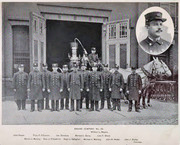
Engine 26 BFD mascot 1891:

1912 fire:
http://hatchingcatnyc.com/2015/11/13/cat-lady-brooklyn-thanksgiving-fire/
409 State Street firehouse:
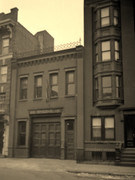
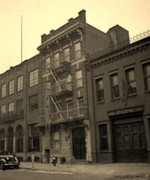
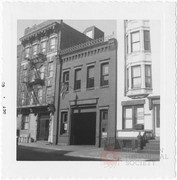
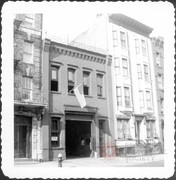
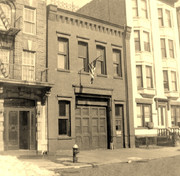
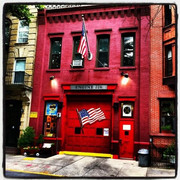
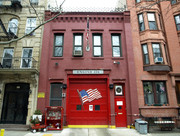
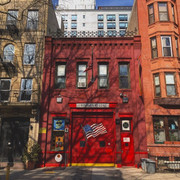





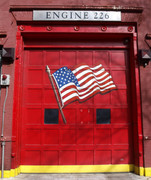
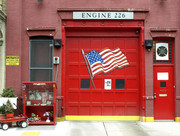
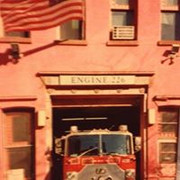

https://www.brownstoner.com/architecture/building-of-the-day-409-state-street/


